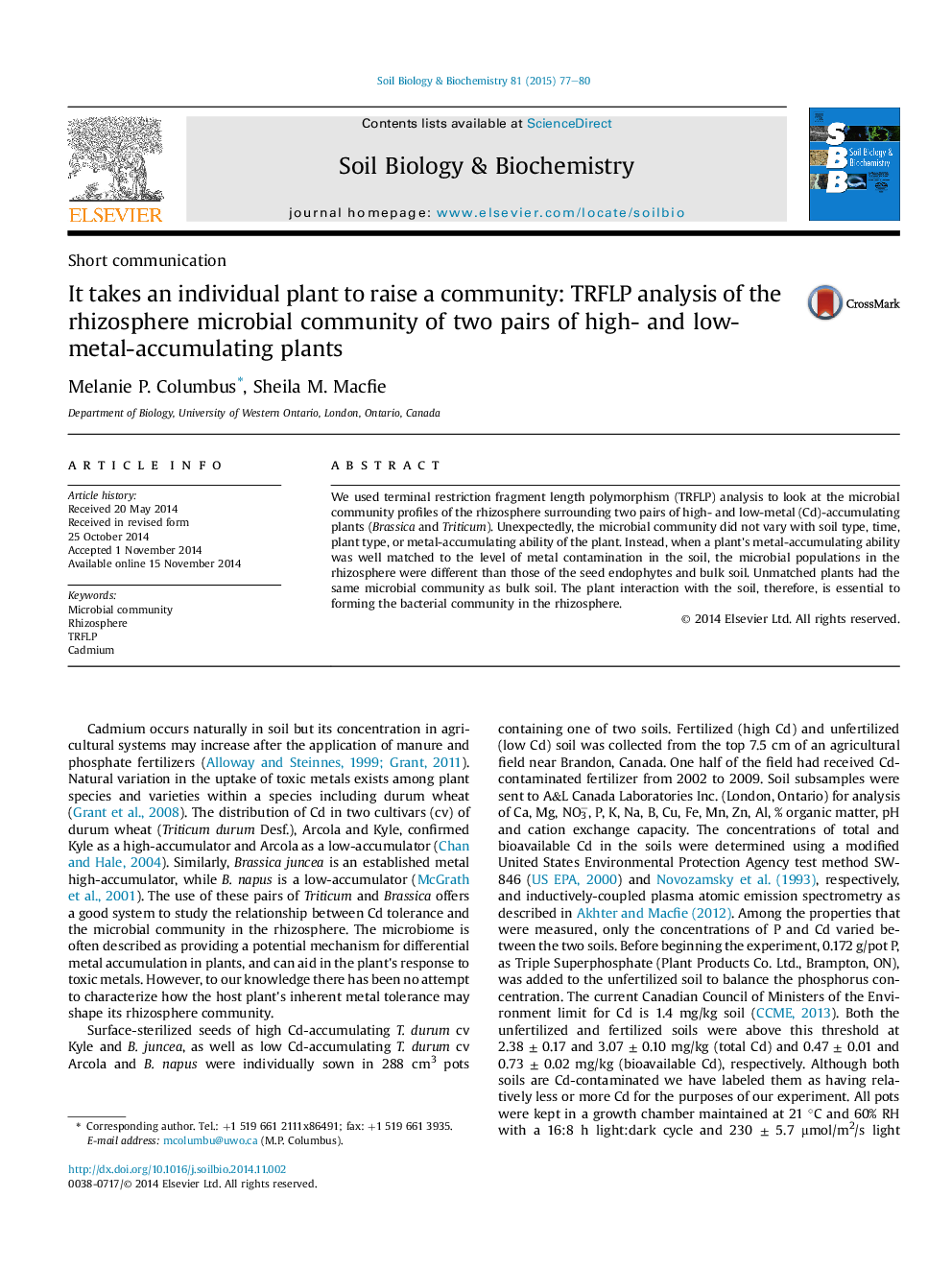| Article ID | Journal | Published Year | Pages | File Type |
|---|---|---|---|---|
| 2024415 | Soil Biology and Biochemistry | 2015 | 4 Pages |
•We tested if a plant's inherent metal tolerance impacts the rhizosphere community.•TRFLP analysis was used to fingerprint the bacterial community of different plants.•Community structure did not depend on soil, species, or metal-accumulating ability.•Plants grown in well-matched soil highly influenced the rhizosphere.•The rhizosphere of unmatched plants did not differ from that of bulk soil.
We used terminal restriction fragment length polymorphism (TRFLP) analysis to look at the microbial community profiles of the rhizosphere surrounding two pairs of high- and low-metal (Cd)-accumulating plants (Brassica and Triticum). Unexpectedly, the microbial community did not vary with soil type, time, plant type, or metal-accumulating ability of the plant. Instead, when a plant's metal-accumulating ability was well matched to the level of metal contamination in the soil, the microbial populations in the rhizosphere were different than those of the seed endophytes and bulk soil. Unmatched plants had the same microbial community as bulk soil. The plant interaction with the soil, therefore, is essential to forming the bacterial community in the rhizosphere.
